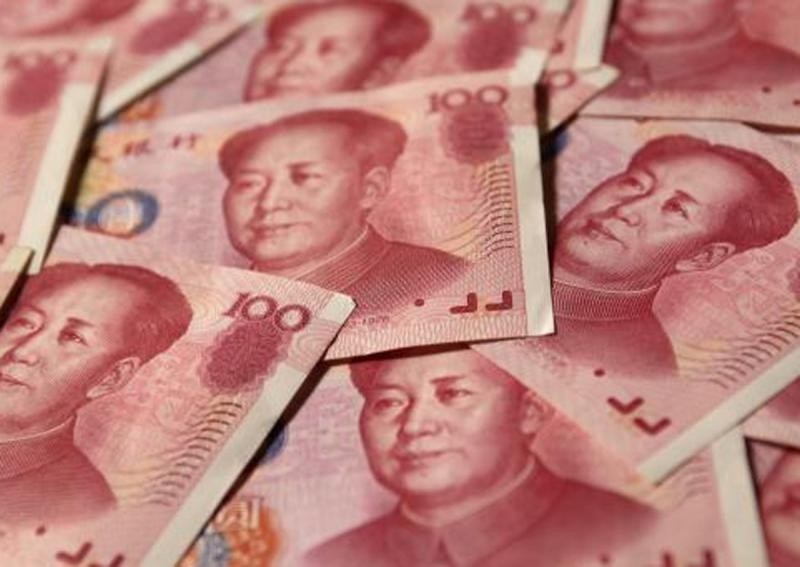Yuan hits 2016 high against US Dollar

The yuan hit a 2016 high on Monday, after the People's Bank of China (PBOC) set its official midpoint rate sharply stronger against the dollar and the central bank governor talked up the currency.
The PBOC set the yuan at 6.5118 per dollar prior to the market open on Monday, up from 6.5314 on February 5, the final fix before the week-long Lunar New Year holiday.
The central bank sets a daily midpoint, or reference rate, and allows the yuan to trade 2 per cent above or below this point, as the country makes the transition to a market-based currency valuation.
At 0.3 per cent higher, Monday's midpoint fix versus the previous fix was the biggest change since Nov. 2. when the PBOC put the midpoint 0.5 per cent higher.
During the holiday break, the dollar index dropped 1.5 per cent against a basket of currencies, pushing the offshore yuan 0.9 stronger during the same period.
The spot market opened on Monday at 6.5300 yuan per dollar and the yuan hit an intraday high of 6.4988 in late morning trade, before trimming some gains; it was changing hands at 6.5020 at midday, up 1.1 per cent on the previous close.
Dow Jones reported that in early trade the onshore yuan strengthened by more than 1 per cent against the previous close, the biggest such move since 2005.
In an interview published in the Chinese financial magazine Caixin at the weekend, PBOC Governor Zhou Xiaochuan said yuan exchange reform would help the market be more flexible in dealing with speculative forces betting on yuan depreciation.
Zhou said there was no basis for the yuan to keep falling, and China would keep it stable versus a basket of currencies while allowing greater volatility against the US dollar, the report said.
It was the first time Zhou had spoken publicly since September. Leaders, including the International Monetary Fund's managing director Christine Lagarde, had criticised the lack of clarity China offered on its forex strategy as a source of unnecessary market turbulence. In November the IMF had given the PBOC a vote of confidence when it included the yuan in its special drawing rights currency basket, decreeing the currency to be "freely floating." This was despite the PBOC's surprise move to devalue the currency by 2 per cent.
The weekend's Caixin interview helped to stabilize Chinese markets, which have tumbled since the start of the year, driven in part by sharp moves in the currency and concerns that Chinese policymakers had not clearly defined their plans.
"The message from the governor really soothed the market sentiment," a trader at a local commercial bank told Reuters.
"We expect the yuan's value to stay in line with central bank's fixing in the near future," he said, adding that there was a bout of trading around 6.5300 early but the yuan then trended stronger due to continuous dollar sales.